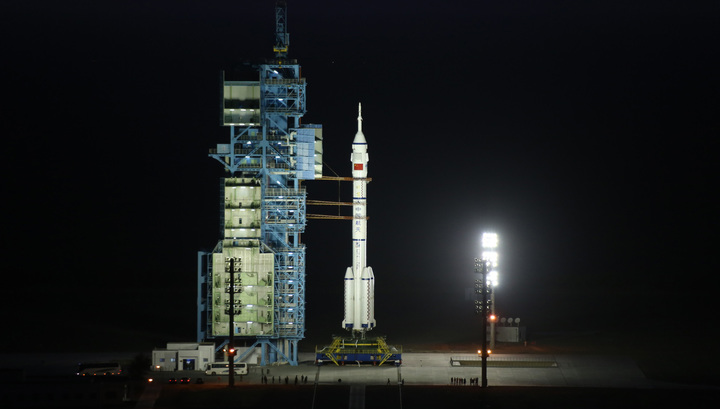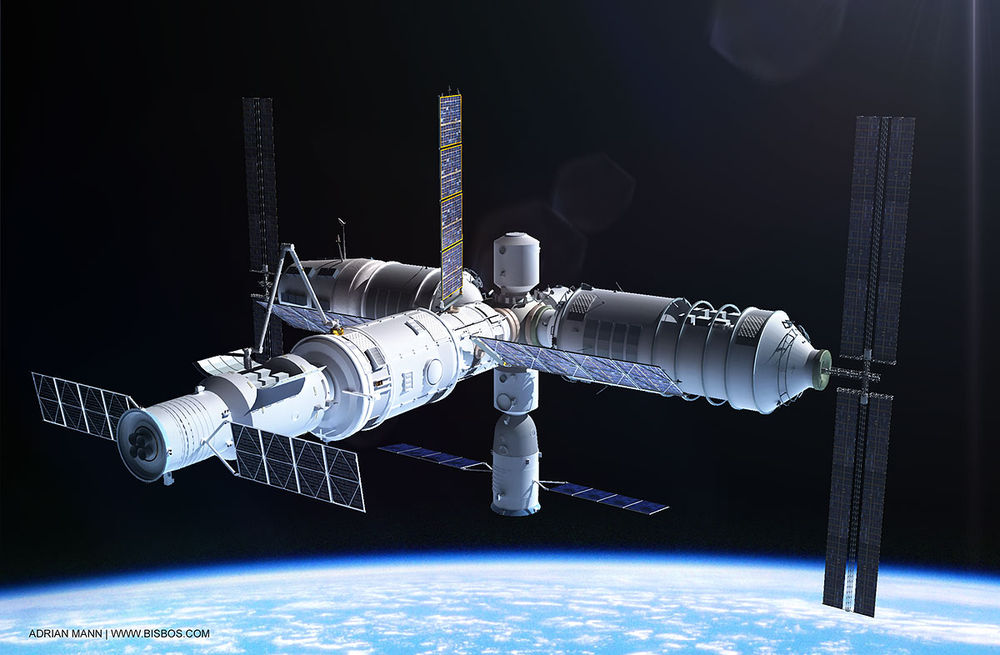China successfully launched the Shenzhou-11 manned spacecraft. What's next?

"Shenzhou-11" on the launch pad (Source: Vesti.ru)
China continues to implement its own space program. Today at 2:30 Moscow time from a launch pad at the Jiuquan cosmodrome, the Long March-2F launch vehicle went into space. The cosmodrome is located in Gansu - northwestern province of China.
On board were two people: 50-year-old Jing Haipeng and 37-year-old Chen Dong. Jing Haipen is an experienced taykunavt, for him this is the third flight into space. The first time he went into orbit on September 25, 2008, as part of the crew of the "Shenzhou-7", the second time - on June 16, 2012 as part of the crew of "Shenzhou-9". In the current expedition, he is the crew commander. Taikunauts (from the Chinese “Taikun” - “space” - ed.) Feel good in flight. The ship entered the calculated orbit 575 seconds after launch.
According to the plan, "Shenzhou-11" should dock with the orbital module "Tyangun-2", after which the taykunauts will work for 30 days on board the station. It consists of two compartments. The first compartment of a larger size is intended for the life of astronauts and experiments. A docking station is installed here. A smaller compartment is used as a technical unit. On the compartment and inside it there are solar batteries, batteries, fuel and main engines.
Characteristics of "Tiangun-2":
')
- Mass - about 8.6 tons;
- Length - 10.4 meters;
- Width (for solar panels) - 18.4 meters;
- Width (maximum case diameter) - 3.35 meters;
- The duration of the visit provided by the expedition from 2 astronauts is 30 days.
According to the plan, the station should be used to test the mid-term in-orbit of the Taikunauts. It will also be used to refuel Chinese spacecraft. As mentioned above, the station will work as a base for a series of experiments. To do this, the station has 14 types of scientific equipment, including devices and systems, such as:
- “Cold” high precision atomic clocks. They may lag or rush by just 1 second every 30 million years;
- Highly sensitive gamma radiation detector POLAR. This is the world's largest detector, it was created by a joint team of scientists from Switzerland, Poland and China;
- Medical equipment with which you can check the effect of weightlessness on the human cardiovascular system;
- Equipment for conducting an experiment to observe the development of plants in space.

Astronauts Jing Haipeng and Chen Dong (Source: EPA / HOW HWEE YOUNG)
Tykunawts will work onboard the station six days a week, eight hours a day. In orbit, the Chinese will be able to perform physical exercises on a stationary bike. Communication with the Earth is planned to be held via video channel and e-mail.
On September 15 of this year, Chinese specialists launched the Changzheng-2F launch vehicle (the Great Trip-2F) from the Jiuquan Space Center. She delivered to the orbit (380 kilometers above the Earth) space laboratory "Tyangun-2". September 23, the laboratory began to conduct experiments in orbit in automatic mode. On September 26, it was raised to a height of 393 kilometers above the Earth, where it was docked with the manned ship.
For several years, China has developed an extensive space program, which it is now implementing. In the next five years, the country is going to launch 110 rockets into space. This is the densest schedule of launches among all the space powers. In five years, China hopes to begin implementing programs for the study and exploration of the Moon and Mars. The Chinese see the moon as a source of helium-3. It can be used to conduct a "pure" thermonuclear reaction. Scientists estimate that there are a lot of helium-3 on the moon, about 10 million tons.
According to the World Security Network , the cost of extracting 1 ton of helium-3 on the moon could be $ 3 billion. According to American experts, the total cost of creating the infrastructure for delivering helium-3 to Earth (developing spacecraft, starting work on the Moon, developing equipment for conducting a thermonuclear reaction with helium-3) will be about $ 20 billion, the duration of such a project is 20 years.
Among other long-term plans of China is the development of its own automatic stations for sending to asteroids located close to Earth. These are small-sized robots that can move along the surface of such an object. In addition, China creates a rover. They are going to send him into space with a Long March-5 booster rocket, which is also being developed so far.
China will deploy its own orbital station by 2022. It will consist of three parts, including the main module and two laboratories. The weight of each module will be about 20 tons. This station was called "Tyangun-3", China published detailed information on it in May of this year.

Scheme of the scientific module "Wengtain"

Scheme of the scientific module "Mengtain"
The main module of the space station is called "Tianhe-1" ("Galaxy-1"). It will be a laboratory and modular sections for storing scientific equipment. A robotic manipulator and five docking ports will also be located here. The module length is 18.1 meters, and the diameter is 4.1 meters. According to the plan, the module will be launched into orbit as early as 2018. Two additional scientific modules will be smaller in size, with a length of 14.4 meters and a diameter of 4.1 meters. They will be mated with the main module in 2020-2022.

The estimated life of the Tyangun-3 orbiting Earth is 10 years. The station, among other things, will help specialists to service the Xuntian space telescope now being built with a 2-meter mirror. The Syuntian Orbital Observatory is equipped with its own engines. It is planned that, if necessary, it will be able to connect to the axial docking station of the “Tyangun-3” docking compartment for maintenance and replacement of scientific instruments. The Xuntian telescope has a smaller diameter than that of the Hubble telescope, however, it has a field of view 300 times larger.
China's space program is very ambitious. The Chinese not only declare the need to achieve certain goals, but also rather quickly implement their plans. Now the space program of this country is one of the largest in the world, if not the most ambitious.
Source: https://habr.com/ru/post/398425/
All Articles